Ever wonder what happens to your old cell phone once it’s replaced, forgotten, or tossed away?
You’re not alone—and neither is your phone. Globally, over 5 billion cell phones are lying unused or headed for disposal, and the majority won’t be recycled properly.
Cell phones aren’t just plastic and screens—they’re e-waste packed with lithium, lead, and rare earth metals. Dumping them in landfills pollutes soil, groundwater, and air.
Worse? Many are exported to developing countries, where unsafe recycling harms workers and ecosystems alike.
In this guide, we’ll break down how cell phone recycling works, where to recycle your old smartphones responsibly, and why it matters more now than ever. Whether you’re a casual user or managing a business with dozens of devices, this is your go-to resource for safe, legal, and eco-friendly phone disposal.
Key Takeaway: How to Recycle Cell Phones
Cell phone recycling prevents toxic e-waste, recovers valuable metals, and reduces the demand for destructive mining. Recycle your cell phone through certified e-waste recyclers, manufacturer take-back programs, retail drop-offs, or mail-in services. For secure, local, and transparent cell phone recycling, GreenCitizen offers trusted solutions across the San Francisco Bay Area.
How to Prepare Your Cell Phone for Recycling (Step-by-Step)
Recycling your old phone isn’t just about clearing clutter—it’s about protecting your personal data and ensuring safe disposal. Before handing over your device, take these essential steps to prepare it properly.
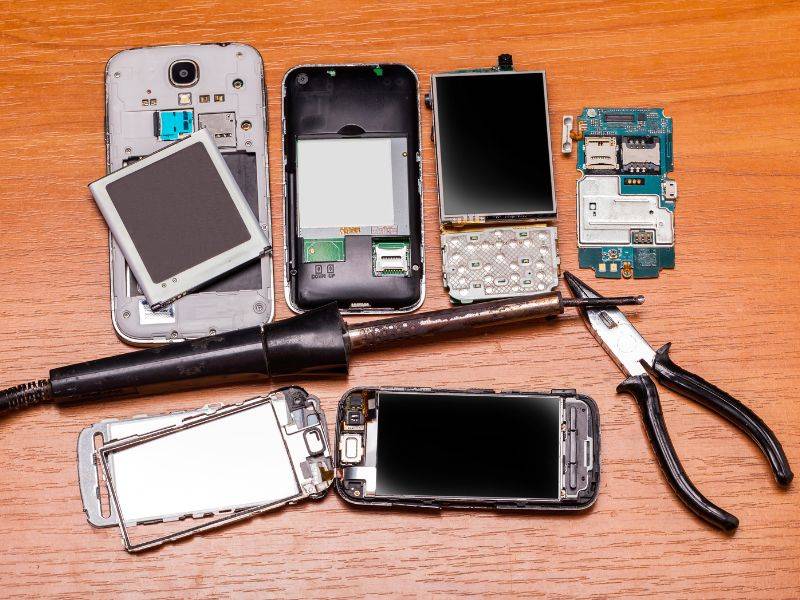
1. Remove SIM and SD Cards
Start by removing your SIM card and any external storage like a microSD card (although most modern cell phones don’t have removable SD cards). These components can hold sensitive contact data, texts, and saved files. Keep them, destroy them, or securely recycle them separately.
2. Back Up Your Data
Use built-in backup tools to save your data. On Android, go to Settings > Google > Backup. On iPhones, use iCloud or iTunes. You can also manually transfer files to a computer or external drive.
3. Sign Out of All Accounts
Manually log out from all apps and services—especially Google, Apple ID, email, and financial accounts. This also disables device-tracking features like Find My iPhone or Find My Device.
4. Disable Two-Factor Authentication
If you’ve used two-factor authentication (2FA), update your security settings on new devices and deactivate 2FA on the old phone to avoid lockouts.
5. Perform a Full Factory Reset
Erase all data through a factory reset:
- Android: Settings > System > Reset > Erase all data
- iPhone: Settings > General > Transfer or Reset iPhone > Erase All Content and Settings
This wipes personal files, cached data, and logins from the phone’s internal memory.
6. Verify the Reset
After rebooting, ensure the device shows its startup screen or setup wizard. This confirms your data is erased.
7. Use a Certified Recycler for Damaged Phones
If your phone is broken or unresponsive, don’t throw it away. Bring it to a certified cell phone recycler like GreenCitizen that offers secure data destruction and issues a certificate of destruction. These services follow R2 or e-Stewards standards to ensure your personal data doesn’t fall into the wrong hands.
TL;DR: How to Prepare a Cell Phone for Recycling
Before recycling your phone, remove the SIM and SD cards, back up your data, and sign out of all accounts. Disable two-factor authentication, then perform a factory reset using your phone’s settings. For broken phones that can’t be reset, use a certified recycler offering secure data destruction with official documentation. This ensures your personal information stays protected.
Cell Phone Recycling Options: 4 Safe and Responsible Methods
Once your personal data is wiped and your phone is ready, the next step is choosing how to recycle it responsibly.
With over 6 billion smartphones in circulation worldwide, simply throwing an old device in the trash isn’t just wasteful—it’s hazardous. Batteries can leak toxic chemicals, and valuable materials like lithium, gold, and rare earth metals often go unrecovered.
The good news?
You’ve got multiple cell phone recycling options—from certified e-waste recyclers to take-back programs and retail drop-off points. Each method helps reduce e-waste, conserve resources, and keep harmful materials out of landfills.
Let’s break down your best, safest choices.
1. Recycle at a Certified e-Waste Recycling Center
The most responsible way to recycle your old phone is through a certified e-waste recycling center. These facilities follow strict environmental and data security standards, ensuring safe disposal of electronics.
Look for recyclers certified under R2 (Responsible Recycling) or e-Stewards programs. These certifications guarantee that your phone won’t be dumped overseas, incinerated, or stripped for parts in unsafe ways.
At legitimate centers, phones are dismantled using specialized equipment. Valuable components—like copper, gold, and rare earth metals—are extracted for reuse.
Batteries and hazardous materials are routed to licensed hazardous waste facilities.
Many certified recyclers also offer secure data destruction, giving you peace of mind that your personal data won’t be recovered or sold. Reputable centers often provide a certificate of data destruction upon request.
You can find certified centers near you through tools like the GreenCitizen Green Directory, which only lists recyclers that meet U.S. environmental and ethical standards.
2. Use a Manufacturer or Carrier Take-Back Program
Many leading phone manufacturers and wireless carriers now offer take-back and trade-in programs designed to keep old devices out of landfills. These programs either refurbish phones for resale or responsibly recycle them through certified e-waste channels.
Depending on your phone’s condition, you may receive credit toward a new device—or, if it’s no longer working, they’ll recycle it for free.
Here’s how major brands handle it:
Manufacturer Trade-In and Recycling Programs
- Apple: Accepts old iPhones and Apple devices through its Apple Trade-In program. Working devices may earn store credit; broken ones are accepted for free recycling.
- Samsung: Offers a trade-in value based on your phone model. Recyclable phones with no value are still accepted via mail-in.
- Google: Recycles old Pixel phones for free and offers trade-in credit when purchasing new devices via the Google Store.
Carrier Recycling and Upgrade Programs
- Verizon: Use your My Verizon account to check eligibility and receive credit for trade-ins. Older phones are accepted for recycling even without value.
- AT&T: Provides monthly bill credits or device discounts through their Trade-In program. Non-working phones are recycled through partner facilities.
- T-Mobile: Offers trade-ins, but approval may take time. The program accepts both working and broken phones depending on condition.
- US Cellular: Known for offering high trade-in values—up to $600—based on phone model and condition.
- Sprint (now part of T-Mobile): Older Sprint programs allowed phone trade-ins for upgrades or credits; now redirected through T-Mobile’s system.
These programs are convenient and often free. Just make sure to check for recycling-only options if your phone no longer works and you’re not interested in an upgrade.
3. Sell Your Old Cell Phone If It Still Works
If your phone is in working condition, consider selling it instead of recycling.
Extending a phone’s life through resale reduces e-waste, supports the circular economy, and helps someone else access a reliable device at a lower cost.
You might be surprised by the demand—even older phones still fetch value in the used electronics market. Whether you’re upgrading or decluttering, here are trusted platforms to sell or trade your old phone for cash:
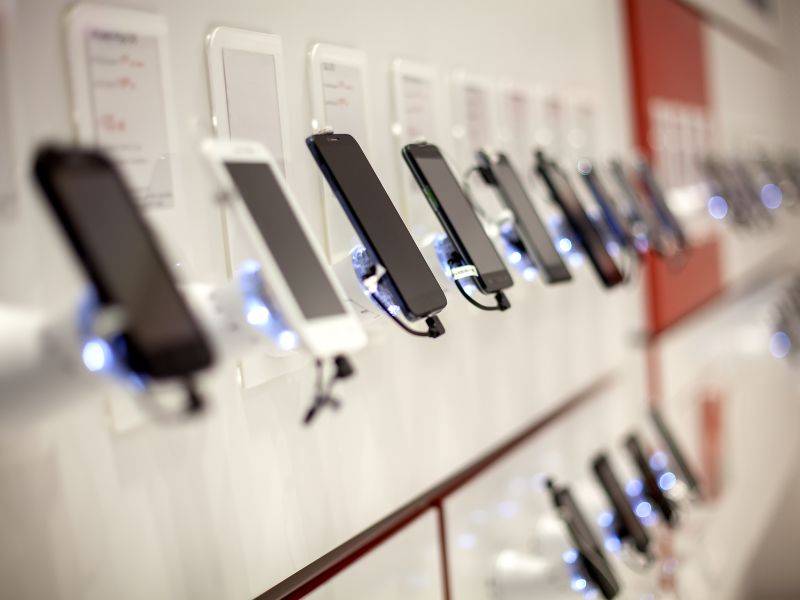
Resale Platforms for Used Phones
- EcoATM: With 5,000+ kiosks across the U.S. (often at Walmart or shopping centers), EcoATM lets you deposit your phone and receive instant cash.
- Decluttr: Offers instant quotes for used phones. Ship your device free and get paid via PayPal or direct deposit.
- GadgetGone: Known for offering competitive payouts, especially for newer models. Payment is issued after inspection.
- Gazelle: Operates online and through kiosks. Accepts a wide range of smartphones, even slightly damaged ones.
- Swappa: A peer-to-peer marketplace where you can sell or swap phones directly with buyers.
- SellCell: Compares trade-in values across multiple resellers to help you get the highest payout available.
Before selling, make sure to back up your data and perform a factory reset to protect your privacy. Many platforms also offer step-by-step guidance on wiping your device securely.
4. Donate Your Old Cell Phone to a Good Cause
If your old phone still powers on, donating it can be one of the most meaningful ways to recycle. Many nonprofit organizations refurbish and reuse donated phones to help underserved communities, support veterans, or raise funds for humanitarian and environmental causes.
By giving your phone a second life, you’re not just reducing e-waste—you’re helping someone stay connected, safe, or supported in times of need.
Where to Donate Your Old Cell Phone
- Cell Phones for Soldiers: Provides phones and calling cards to active-duty military members and veterans. Devices are either reused or recycled, and proceeds support veteran services.
- Medic Mobile: Donated phones are used to support healthcare communication systems in remote communities across Africa and Asia.
- 911 Cell Phone Bank: Offers free phones to domestic violence victims, seniors, and at-risk individuals for emergency-only use.
- The Wireless Alliance: Recycles phones to fund various environmental and social causes. Based in Colorado, it offers a sustainable donation program.
- EcoCell: Partners with organizations to reuse and recycle phones while educating communities about electronics recycling.
Cell Phone Recycling in the San Francisco Bay Area with GreenCitizen
If you’re in the San Francisco Bay Area, GreenCitizen offers safe, transparent, and certified cell phone recycling services designed for both residents and businesses. Whether you’re clearing out a drawer full of old phones or responsibly managing devices across an office, we make the process local, secure, and fully accountable.
Since 2005, we’ve helped over 400,000 residents and 70,000 businesses recycle electronics the right way—keeping more than 32 million pounds of e-waste out of landfills.
Here’s how you can recycle your old cell phones with GreenCitizen:
1. Drop-Off Cell Phone Recycling for Bay Area Residents
Live in the Bay Area? Drop off your old cell phones at our Burlingame EcoCenter—no appointment required. We accept smartphones of all kinds, including flip phones and older models. Our team will assist you on-site and make sure your devices are handled securely and responsibly.
Your phones are processed locally and tracked through our GreenCitizen Total Accountability Management System (GTAMS) to ensure full transparency. That means no illegal exports, no dumping—just certified, ethical recycling.
📍 Visit us at:
1831 Bayshore Hwy, Suite 2, Burlingame, CA 94010
📞Call: (650) 493-8700
Whether you’re recycling a single phone or a whole box, we make it fast, local, and secure.
2. Business Cell Phone Recycling Pickup in the Bay Area
If your Bay Area business is decommissioning work phones or managing an IT refresh, GreenCitizen provides fast, trackable pickups for secure cell phone disposal. Whether you’re a startup, school, or enterprise IT team, our service scales to fit your needs.
We offer:
- Free pickups for qualifying loads
- DoD- and NIST-compliant data destruction
- Detailed tracking reports for audit and compliance
- Local, ethical recycling through our GTAMS system
We’ve helped thousands of companies meet their ESG and sustainability goals by offering responsible electronics recycling with full chain-of-custody documentation.
📞 Call (650) 493-8700 to schedule a pickup or request a custom quote.
3. Mail-In Cell Phone Recycling (Available Nationwide)
Not in the Bay Area? No problem. Our mail-in cell phone recycling service is available across the U.S., giving individuals and businesses a certified way to recycle old phones—even from remote or underserved locations.
Here’s how it works:
- Fill out our Mail-In Recycling Form
- Package and ship your phones to our facility
- Choose optional data destruction services
- Get confirmation that your devices were responsibly recycled
Phones are processed just like local drop-offs—through our GTAMS system—so you can be confident your device is handled safely and never dumped or exported.
4. Find Responsible Cell Phone Recyclers Using the Green Directory
Not sure where to recycle your phone? The Green Directory helps you find certified cell phone recycling options in your area.
Just enter your ZIP code and the item you want to recycle. The Green Directory returns a list of verified recyclers near you—no sketchy exporters or landfill-bound programs.
Whether you’re in the Bay Area or beyond, the Green Directory gives you the power to recycle cell phones responsibly.
What Metals and Materials Are Inside Your Cell Phone?
Most people don’t realize just how many valuable—and often hazardous—materials are packed inside a single cell phone. These devices are small but complex, built from over 60 different metals and minerals, including rare earth elements, precious metals, and toxic substances.
When recycled properly, many of these materials can be recovered and reused, reducing the need for new resource extraction.
Recoverable Materials in Cell Phones (By Component)
Each part of your cell phone contains different metals and raw materials. Here’s what recyclers aim to extract from the most common components:
- CPU and Circuit Boards
- Contains: Gold, copper, silver, palladium, plastic, and silicon
- Challenge: Requires advanced shredding and chemical separation
- Battery (Lithium-Ion)
- Contains: Lithium, cobalt, graphite, nickel, manganese, aluminum
- Challenge: Must be safely removed and processed due to fire risk
- Display Screen
- Contains: Indium tin oxide, aluminum oxide, silicon dioxide, rare earth elements
- Challenge: Fragile glass and embedded materials complicate recovery
- Casing and Frame
- Contains: Aluminum, magnesium, stainless steel, polycarbonate plastics
- Challenge: Often mixed materials requiring mechanical separation
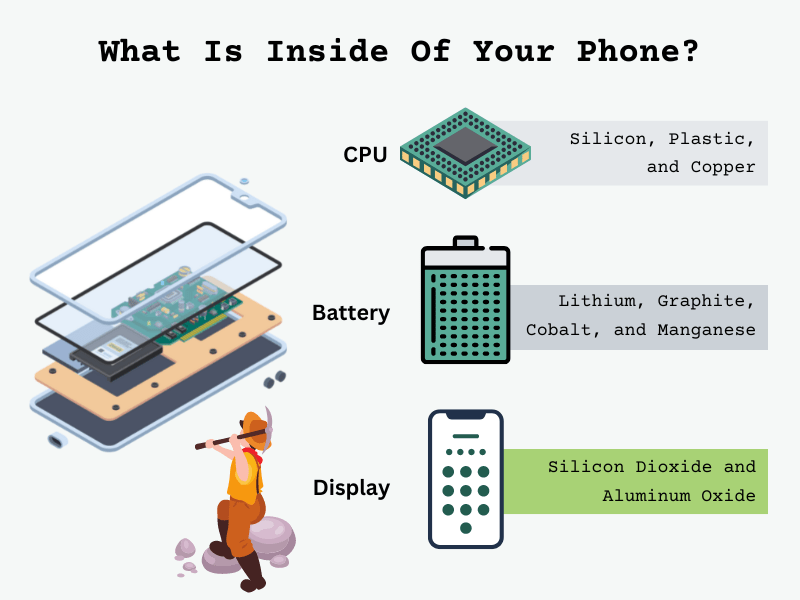
Each part of your cell phone contains different metals and raw materials. Here’s what recyclers aim to extract from the most common components:
- CPU and Circuit Boards
- Contains: Gold, copper, silver, palladium, plastic, and silicon
- Challenge: Requires advanced shredding and chemical separation
- Battery (Lithium-Ion)
- Contains: Lithium, cobalt, graphite, nickel, manganese, aluminum
- Challenge: Must be safely removed and processed due to fire risk
- Display Screen
- Contains: Indium tin oxide, aluminum oxide, silicon dioxide, rare earth elements
- Challenge: Fragile glass and embedded materials complicate recovery
- Casing and Frame
- Contains: Aluminum, magnesium, stainless steel, polycarbonate plastics
- Challenge: Often mixed materials requiring mechanical separation
What’s the Value of These Materials?
Cell phones aren’t just waste—they’re miniature urban mines. With millions of phones thrown out each year, the potential value adds up fast.
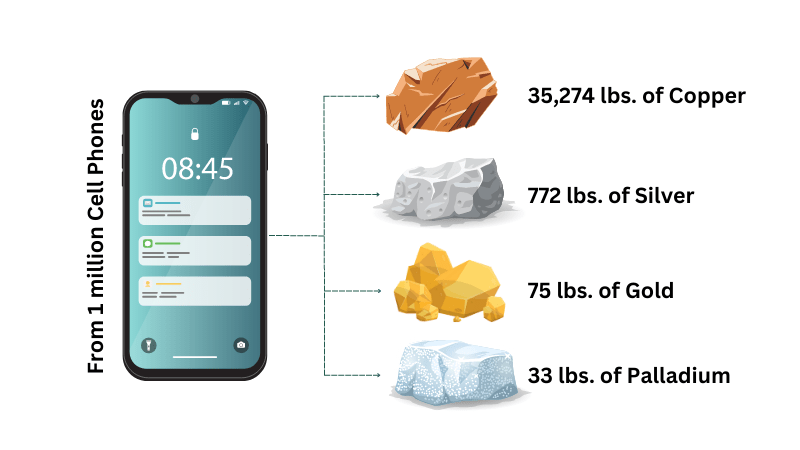
From 1 million recycled phones, you can recover approximately:
- 35,000 pounds of copper
- 772 pounds of silver
- 75 pounds of gold
- 33 pounds of palladium
- Significant quantities of lithium, cobalt, and rare earth elements
These materials can be reused in new electronics, EV batteries, solar panels, and industrial components—lowering the demand for destructive mining operations worldwide.
Environmental Impact of Cell Phone Recycling
Every year, over one million cell phones end up in landfills in the U.S. alone. While they may seem small, old phones pose serious environmental risks due to the toxic materials inside and the global impact of electronic waste.
Here’s why recycling your phone responsibly matters more than ever.
Toxic Materials and Leaching Risks
Cell phones contain heavy metals like lead, cadmium, mercury, and lithium—especially within their lithium-ion batteries. When dumped in landfills, these materials can leak into the soil and water as the phones break down under heat and moisture.
- Lithium and cobalt can cause fires and explosions, especially in compressed landfill conditions
- Lead and mercury are neurotoxins that contaminate groundwater and harm both wildlife and humans
- Even small quantities of cadmium can poison aquatic life for decades
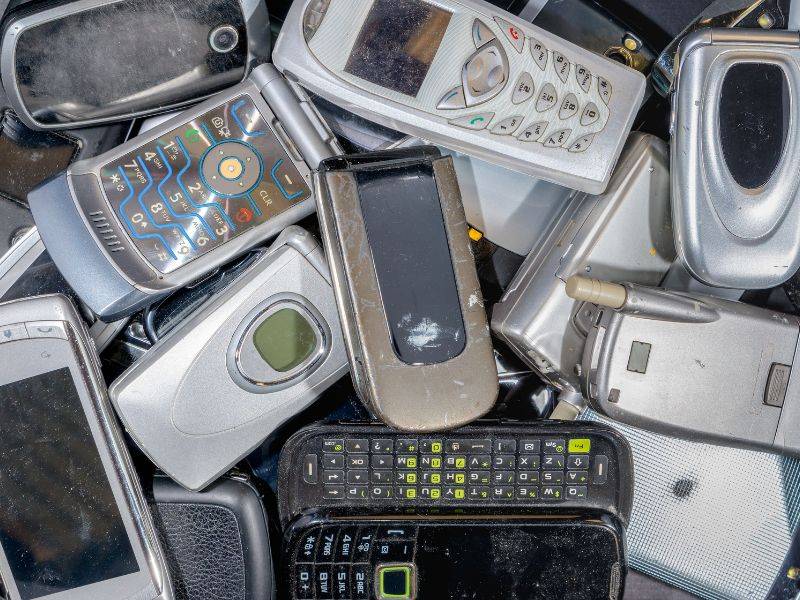
Proper cell phone recycling ensures these substances are extracted and processed safely—preventing irreversible environmental damage.
Landfill Waste and Ecosystem Disruption
Cell phones may not take up much space individually, but the millions discarded annually create a growing e-waste footprint. E-waste represents only 2% of landfill volume, but it accounts for 70% of the toxic waste found in landfills.
Landfills must constantly expand to accommodate this waste, often encroaching on natural habitats and placing long-term stress on local ecosystems.
Cell phone recycling helps reduce this pressure by keeping reusable materials out of dumps and decreasing the need for more landfill space.
Raw Material Mining and Global Ethical Impact
Your phone contains valuable metals like gold, copper, palladium, and rare earth elements—many of which are mined in developing countries under unsafe and unethical conditions.
- Cobalt, for example, is often mined in the Democratic Republic of Congo, where child labor is still common
- Mining for rare metals leads to deforestation, water pollution, and ecosystem collapse in sensitive regions
- Extracting new metals emits far more CO₂ than recovering them through recycling
By recycling your phone, you reduce the demand for new resource extraction, lower your carbon footprint, and support a more ethical and sustainable supply chain.
Why Your One Phone Still Matters
It might feel small, but recycling just one cell phone prevents toxic waste, conserves rare materials, and supports a cleaner planet.
When millions make this choice, the collective impact can:
- Reduce global e-waste pollution
- Save energy and cut emissions
- Protect vulnerable communities and ecosystems
Frequently Asked Questions (FAQ)
When a cell phone is recycled, people and machines break it down into the main components. These are then further processed in order to separate the raw materials and then either safely dispose of the toxic ones and bring the rest into the cycle economy.
You should back up, and factory reset your cell phone before bringing it to recycling services. While there are services that offer data destruction, it’s always safest to ensure there is nothing personal left on the phone.
Most parts of a cell phone can be recycled. This includes plastics, silicon, copper, gold, palladium, and many other metals. E-waste recycling has become a lot more efficient at dealing with all these materials.
You dispose of old cell phones at home by contacting a recycling company like Green Citizen. You can either drop it off or send it in. The last thing you should do is dump it in the trash as there are valuable and toxic materials in it.
You prepare a cell phone for recycling by backing up all your data and then doing a factory reset. This will fully erase all your data and make it impossible to retrieve if it gets into the wrong hands.
es, Verizon will take old phones as a trade-in. The company has a dedicated e-waste recycling service, and you can get credit for your old phone to either buy a new one or reduce your next monthly bill.
Take The Right Approach To Cell Phone Recycling
Recycling your old phone is one of the simplest ways to protect your data, preserve valuable resources, and reduce toxic e-waste. And with GreenCitizen, doing the right thing has never been easier.
Bay Area residents can drop off phones at our Burlingame EcoCenter, while local businesses can schedule secure pickups backed by full tracking and certified data destruction. Not in the Bay Area? Use our nationwide mail-in service or search for trusted phone recyclers near you with the Green Directory.
Since 2005, we’ve kept over 32 million pounds of electronics out of landfills. Your phone could be next.
Protect your privacy. Support the planet. Recycle the right way—with GreenCitizen.



